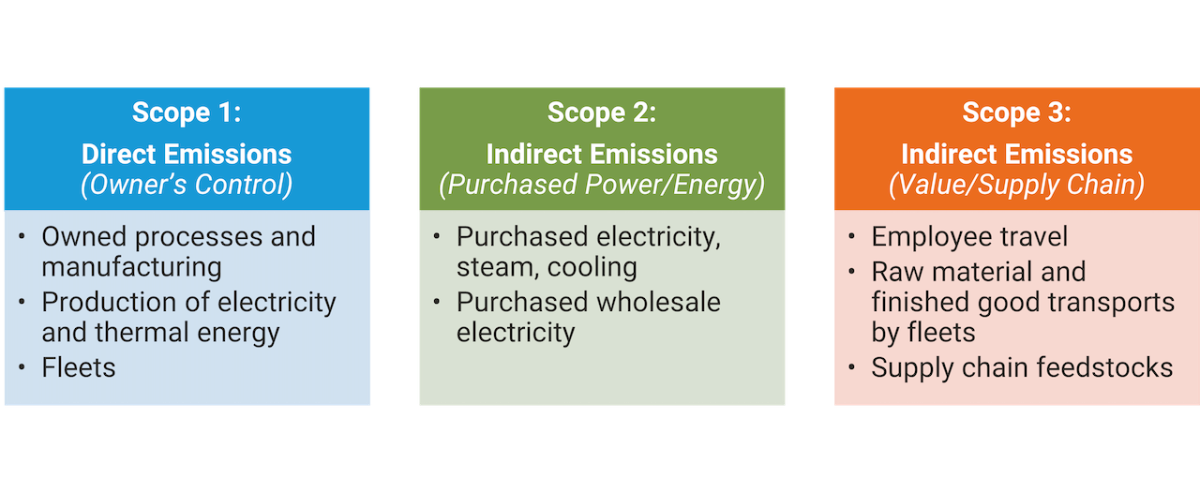Moving From Sustainability Talk to Action: Avoiding Greenwashing
Originally published on Black & Veatch Insights
This is the second in a series of insights called “Moving from Sustainability Talk to Action”. It answers the question: what should organizations in either the private or public sector do to avoid being labeled as green washers?
By Ajay Kasarabada, P.E, AVP and Director – Environmental Solutions, Black & Veatch
Climate Change, Commitments and the Stakeholders
The biggest megatrend on the planet today arguably is climate change, more specifically global warming caused by human-produced greenhouse gases (GHGs). As markets, customers and government policies are increasingly demanding action, organizations — public and private, large and small — are making GHG reduction commitments to do their bit to solve the problem. These commitments have different names such as net zero, carbon neutral and expanded commitments to include environmental, societal and governance (ESG), sustainability and others. This article is not going to question or opine about whether these commitments are genuine or not, and whether they are a public relations exercise and a customer/market capture exercise or not, but rather will focus on steps these organizations can take to showcase their genuine interest in making a difference when it comes to climate change.
The world of climate stakeholders is large and diverse but can broadly be bucketed into two groups: Those who generate information (such as reporters, employees, software providers and auditors) and those who use the information (such as regulators, customers, analytics platforms, investors, lenders and the public). The activities of these two groups are broadly governed by climate frameworks and standards. These include an alphabet soup of frameworks such as CDP, CDSB, UNSDG, GRI, IIRC, SASB, GHG Protocol and others. The Science Based Targets initiative (SBTi), a partnership between CDP, World Resources Institute (WRI), the World Wide Fund for Nature (WWF), and the United Nations Global Compact (UN Global Compact) has established a widely-accepted net-zero standard, which provides a four-step guide path to organizations to do their part in limiting global temperature rise to less than 1.5 °C by 2050.
- Focus on rapid, deep emission cuts
- Set near- and long-term targets
- No net zero claims until long-term targets are met
- Go beyond the value chain.
SBTi defines net-zero as the algebraic sum of an organization’s scope 1, 2 and 3 emissions. Most organizations will require up to 90 to 95 percent decarbonization to reach net-zero under the SBTi standard.
If you conduct a web search and review a sampling of climate commitments from any organization large or small, we see some of the commitments summarized below, depending on the nature of their business.
- Carbon neutrality by 2050
- 25 percent reduction of scope 3 GHG footprint by 2035
- 30 percent reduction of scope 3 GHG footprint by 2030
- Reduce greenhouse gas (GHG) emissions 30 percent, including sourcing 60 percent of electricity from renewable energy by 2030, and deliver carbon neutral operations by 2050
- One-third reduction in scopes 1 and 2 by 2030 and carbon neutrality by 2050
- Net-zero carbon dioxide (CO₂) emissions by 2050 for electricity they generate and electrify 100 percent of the light duty fleet by 2030
- Reduces carbon emissions by 70 percent through 2030 (relative to 2005 levels). Net-zero carbon emissions by 2045
This small sampling reveals short- and long-term commitments, but it is not really clear what carbon neutrality or net-zero is — or in some cases, if the commitments cover all the scopes. It is therefore natural that if you are in one of the climate stakeholder groups, a question could be asked seeking clarity about these commitments.
What is Greenwashing?
Recently, in a UN report on net zero emissions commitments of non-state entities, titled Integrity Matters, UN Secretary General António Guterres is quoted as saying, “We urgently need every business, investor, city, state and region to walk the talk on their net zero promises. We cannot afford slow movers, fake movers or any form of greenwashing.”
The Merriam-Webster dictionary defines greenwashing as “the act or practice of making a product, policy, activity, etc. appear to be more environmentally friendly or less environmentally damaging than it really is.” The stakeholders are getting more and more educated on the new set of vocabulary words which also are being connected to the GHG commitments. Some of these new terms include water positive, nature positive, triple bottom line, and another set of acronyms such as ESG, CSR, DEI, LCA, EJ, TCFD, TNFD and others. In this era of heightened awareness driven by social media, and intense stakeholder scrutiny, what can companies and organizations do to prevent greenwashing accusations, especially when it comes to commitments?
Three Steps to Mitigate Greenwashing Concerns
While GHG commitments are relatively new, working with companies and organizations recently has given us some insights on what should be looked at from a bigger picture perspective. Based on working with clients across multiple sectors and our own internal reflections at Black & Veatch, there are three steps that organizations and companies can take to mitigate greenwashing concerns.
- Transparency and accountability
- Sustainability team composition and empowerment
- Taking your employees on this ride
Transparency and accountability
Transparency begins with setting meaningful targets and goals. As discussed above, aligning the goals with a standard like SBTi or UNSDG will be a good first step and result in clarity associated with emissions scopes (i.e, scopes 1, 2 and/or 3) that factor into your net-zero or carbon neutral commitments math calculation. This also will help with identifying the right software tools to collect, track, record, and analyze data and associated emissions from all scopes and conducting scenario analyses of compliance pathways. Since not all software tools are the same, reviewing demos from vendors will be key to identifying and right-sizing the tool for your organization. Working with independent third parties such as NGOs or certified environmental consultants to verify and validate and periodically report data will also help demonstrate that your organization is committed to transparency and accountability.
Sustainability team composition and empowerment
Sustainability teams and leaders who are primarily tasked with developing commitments for announcements by the CEO or a leader in the C-Suite should be provided resources they need to carry out their work effectively. Innovation needs to be encouraged, and the teams need to be trained in understanding the balance between commitments, business impact and environmental impacts. Such teams that understand this balance should be empowered to bring about changes in the organization or company’s processes. This is very difficult because the sustainability teams typically do not have budgets to approve changes in infrastructure to realize net-zero goals. For example, decisions to electrify an operation or convert a fleet to electricity usually are made in groups other than sustainability. Communication is key, and companies and organizations that can quickly transition a plan to action will be early movers towards deploying projects and making investments that help with decarbonization.
Finally, sustainability teams also will need to evaluate land/nature-based, water-based and supply chain-based data that tie into the emissions-based commitments to project a well-thought-out holistic plan for the climate stakeholders. Read my first article in this series where I talked about the three themes that help with moving from sustainability talk to action.
Taking your employees on this ride
In the recent Black & Veatch-hosted ILO meeting at Greentown Labs in Houston, one of the attendees — Jodie Brinkerhoff, vice president of innovation and strategy at Dallas Fort Worth International Airport (DFW) — voiced that “organizations need to win the hearts and minds of its employees to embrace net-zero commitments.” When employees change their behaviors and ingrained habits to understand why they are doing what they are doing, when they understand their role in their organization’s overall journey to meet GHG commitments, the changes will happen more smoothly. I worked with one large company that was motivated to train all of their shop floor and manufacturing operators and supervisors in renewable energy technologies, energy efficiency technologies and advanced transportation concepts, because they believed that the employees shouldn’t feel alienated from changes happening at the shop floor to make processes more efficient and learning about green energy. The company believed that the employees will be more open to retool their capabilities and embrace change rather than resist it.
Summary
Measuring GHG emissions reliably and ethically to meet commitments involves using scientifically accepted methods and ensuring that the measurement process is transparent, accurate, unbiased and backed up by evidence. However, focusing on ethical measurement alone will not lead to the greenwashing doubters to look elsewhere. At Black & Veatch, we even went through an introspection process regarding our very own sustainability and carbon commitments and business impacts. Our sustainability reports are our genuine attempt to be transparent towards this cause, and we are more motivated than ever to practice what we preach. The three steps discussed above, if implemented, will help my company and our clients meet our commitments and avoid the greenwashing label.



